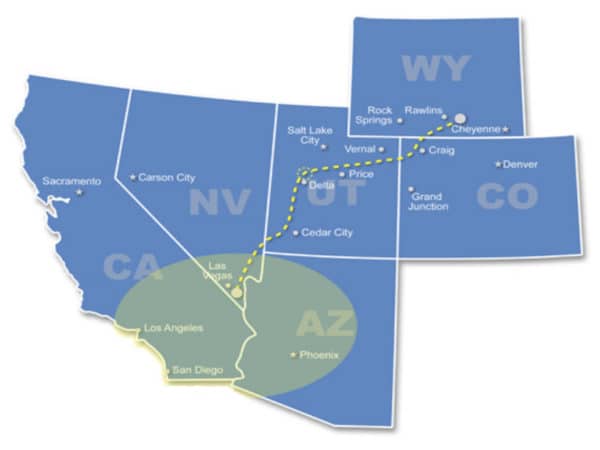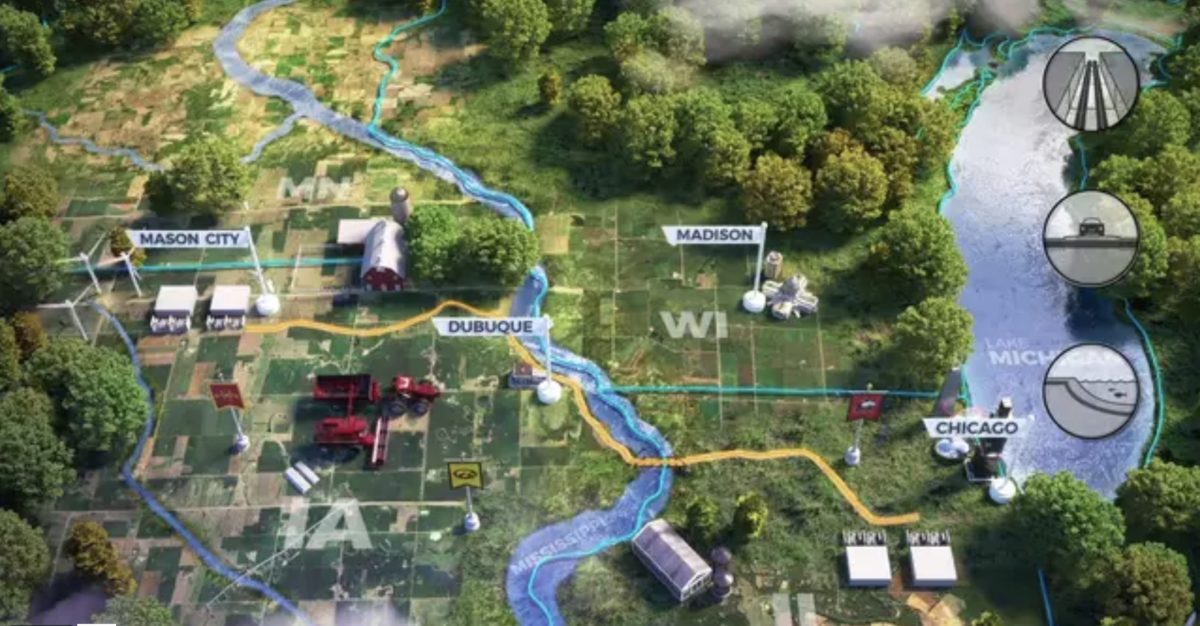New transmission lines crossing several states to carry solar and wind power can be easily located in federal “energy corridors” in the West, and co-locating high-voltage DC transmission with railroad lines does not present problems. On the other hand, co-locating AC or DC transmission with highways requires approval from each state along the route, and states have the authority to deny that approval.
Those takeaways are from a new report from the Federal Energy Regulatory Commission (FERC) to Congress. The House Appropriations Committee requested the report as part of the 2020 Appropriations Act, with a specific request to outline barriers and opportunities for transmission “over the nation’s transportation corridors.”
FERC “has limited authority to authorize the construction and operation of transmission facilities,” the report notes.
“The report begins an important national discussion about making much greater use of highway and rail corridors as a way around some of the well-known barriers to transmission,” said Rob Gramlich, executive director of Americans for a Clean Energy Grid.
“We are beginning to see some use of rail where railway companies are working well” with transmission developers, he said.
“We need a little more attention on highways,” Gramlich added, to encourage state Departments of Transportation to authorize transmission projects along “the very valuable rights-of-way that are otherwise under-utilized.”
Co-locating transmission

The federal government has designated about 6,000 miles of “energy corridors” in the West, including 4,000 miles of highway and pipeline rights-of-way—most of them wide enough for multiple transmission and pipeline projects. The report highlights the proposed TransWest Express transmission project, which would “maximize the use of existing and designated transmission corridors” (image at right).
As for highways, states “are authorized to decide if they will allow transmission in highway rights-of-way.”
When co-locating transmission with railroads or petroleum pipelines, the report notes a “project-specific” potential for electrical interference from high-voltage AC that could affect railroad or pipeline operation and safety. The Midwest’s proposed SOO Green underground transmission project would use high-voltage DC current along rail rights-of-way (image at the top of this story).
Other safety and security issues may arise from co-location as well, says FERC’s report, from transmission tower failure to “a more desirable terrorist target.”
Renewables-focused transmission
From 2009 to 2014, Texas added 3,600 miles of in-state transmission, at a cost of $6.9 billion ($1.9 million/mile), the FERC report says. Texas first identified high-wind Renewable Energy Zones, and modeled the most cost-effective routes for transmission lines to bring power to population centers.
The Texas grid operator ERCOT says that solar and wind power “may be complementary resources,” suggesting that Texas transmission lines originally built for wind power may now also be used for solar power. ERCOT has approved 12 GW of solar in the last seven months alone.
Yet a similar transmission planning process, also focused on renewable energy zones, failed in the Western Interconnection region, which encompasses 11 states and parts of Canada and Mexico. Stakeholder interviews by the Western Governors Association showed that utilities were “reluctant to invest in long lead-time and capital-intensive projects.”
A growing chorus
To promote transmission to bring wind and solar power from resource-rich regions—such as the region from the Rocky Mountains to the Mississippi River—to more populous regions, the American Council on Renewable Energy and Americans for a Clean Energy Grid have launched the Macro Grid initiative.
The Solar Energy Industries Association also promotes federal and state initiatives for expanded transmission, the group says on its website.
And Los Angeles is comparing the costs of adding transmission to bring renewable power into the city, versus promoting more distributed solar generation within the city.
FERC’s role
“High-voltage transmission can help states achieve their renewable portfolio standards and renewable portfolio goals,” says the report, noting that most states have a renewables standard or goal. And FERC policies “seek to help achieve appropriate levels of transmission investment” to address goals including “needs driven by public policy requirements.”
FERC’s report to Congress presents a helpful overview of federal and state transmission laws and policies, and also discusses six recent transmission studies.
The report considers overhead and underground AC and DC high-voltage transmission. It mentions canals but does not discuss their use for transmission. The report’s title is “Report on barriers and opportunities for high voltage transmission.”
This content is protected by copyright and may not be reused. If you want to cooperate with us and would like to reuse some of our content, please contact: editors@pv-magazine.com.








Both colocating transmission lines with highways and rails presents a problem where grants of land were acquired from private land owners for specific purposes. Part of my land was granted “for highway purposes” and under the “Rails to Trails” decision SCOTUS struck down, as an uncompensated taking, the use of grants made for railway right of ways being converted for other purposes. The grants once altered or disused revert back to the original land claimant or his heirs and assigns.